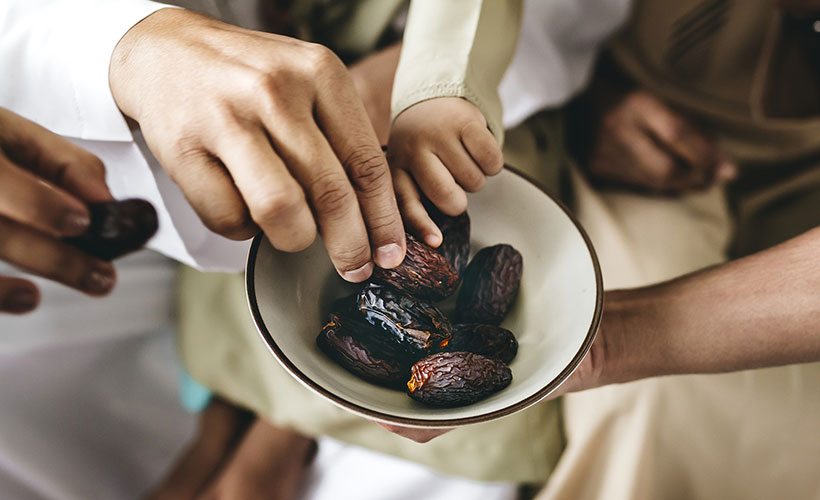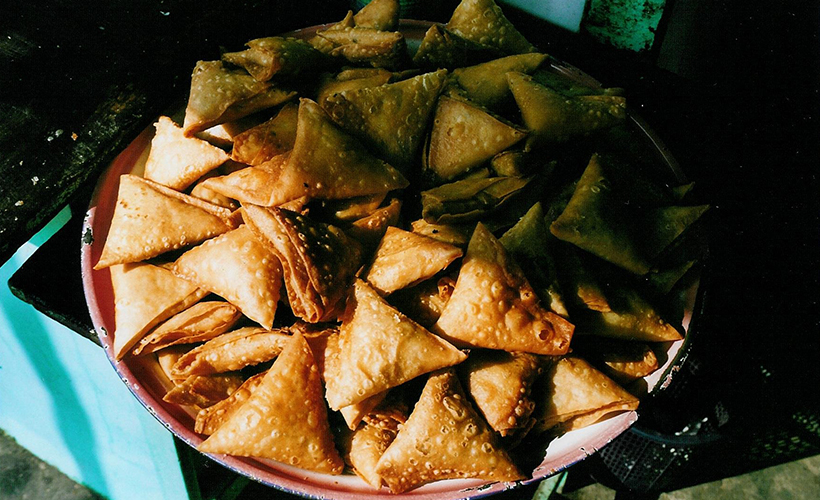
We’re now approaching the end of Ramadan. Despite this period being a time free from greed and gluttony, one can’t help but count down the minutes till the Maghreb prayer and watch in eagerness as the sun sets to envelop the sky in varying shades of gold.
Although Ramadan is a time of self-discipline and restraint, it also serves to remind us of how blessed we are to be able to eat as we wish and satisfy our tummies as soon as they grumble. To be able to look forward to a hearty iftar meal, for example.
Iftar, if you’re not in the know, is the breaking of the Ramadan fast. It’s the meal eaten after sunset by Muslims who observe this fast. As Muslims populate various corners of the world, it’s also interesting to see the variations in iftar meals from sweet milk pastries to festive food fairs.
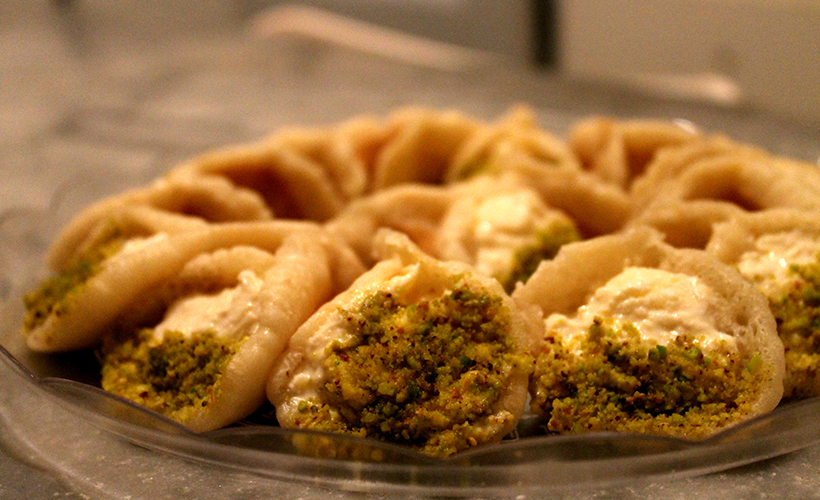
1. Saudi Arabia: Of samboosas and qatayef
Come sundown, Saudis say hello to samboosas! Or as you probably know it – samosas. This Saudi Arabian Ramadan favourite makes its appearance on tables nationwide and is savoured in hefty amounts. Ground meat, chewy cheese, vegetables (or even chocolate!) are packed into savoury little parcels of flaky pastry and make for the perfect on-the-go snack to break your fast.
Qatayef, on the other hand, are essentially mini pancakes filled with everything under the sun. Be it the classic nutty mixture of chopped pistachios and walnuts, or the ooey-gooey sweet cheese ubiquitous throughout Middle Eastern cuisine. They’re then folded in half, deep-fried, and of course, drizzled in sugar syrup. Crisp on the outside with a surprise filling in the centre, there’s no doubt as to why qatayef are as famous as they are.
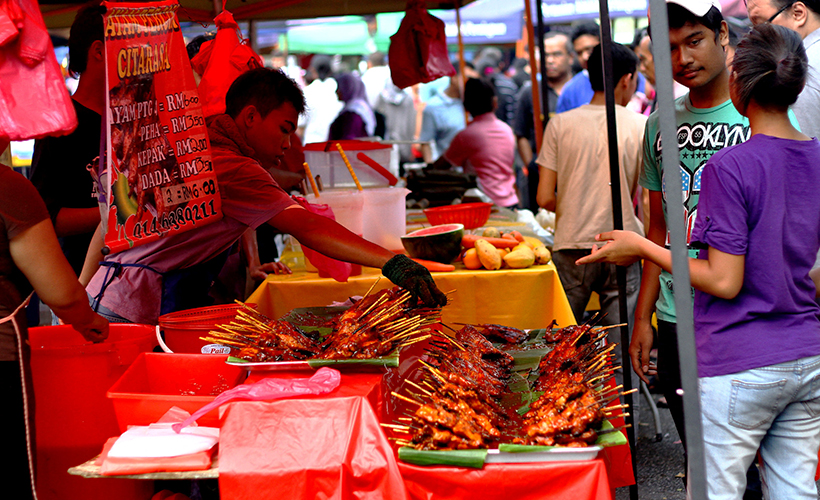
2. Malaysia: Of bazaars and bubur lambuk
Malaysia is as many would make it to be – a melting hot pot of cultures. Even though the Muslim segment makes for the majority of the population, Malaysia’s citizens of varying races and religions enjoy Ramadan festivities together.
This shared merriment comes in the form of Ramadan bazaars – local open-air markets held daily throughout the holy month where many Muslims come to buy their iftar (known locally as buka puasa) meals to bring home. If you’re a traveller, there’s no better place to sample the best of local Malaysian food than at one of these bazaars.
From murtabak (pan-fried meat-loaded bread) to grilled lamb to sweet bite-sized cakes in every shade and hue of the rainbow, Ramadan bazaars are a yearly foodie affair many look forward to. Another unique Malaysian delicacy synonymous with buka puasa is bubur lambuk. The fragrantly spiced rice porridge is commonly given out at mosques during this holy month and features (among many other spices) date powder, aniseed, cardamom, clove, and black pepper. Though simple, bubur lambuk has become an integral part of Ramadan for Malaysian locals.
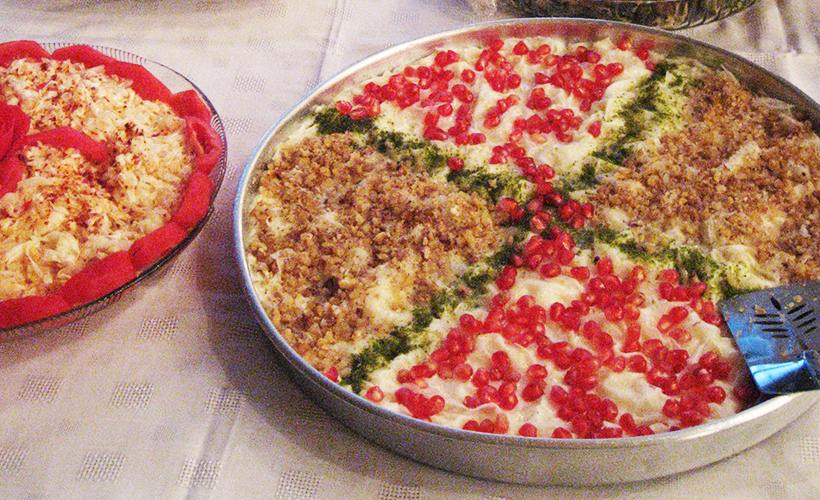
3. Turkey: Of Ramazan pidesi and gullac
Ramadan in Turkey is also known as ‘Ramazan’. And what better way to break your fast than with a Ramazan pidesi (Ramadan Pita)? Turkey’s most beloved bread is a culinary tradition not to be missed out on. With its large round shape and distinctive criss-cross design, the ever-so-fluffy bread is easily spotted everywhere this month.
For something on the sweeter end, gullac is the Turkish’s dessert of choice during Ramadan. Think of it as a lighter version of baklava if you will. Layers upon layers of thin corn starch pastry are soaked in rosewater-infused milk and topped with crushed pistachios and glistening pomegranate seeds. As heavy, cloying desserts may not fare well on the stomach after an entire day of fasting, gullac has become a symbol of the ideal iftar dessert.
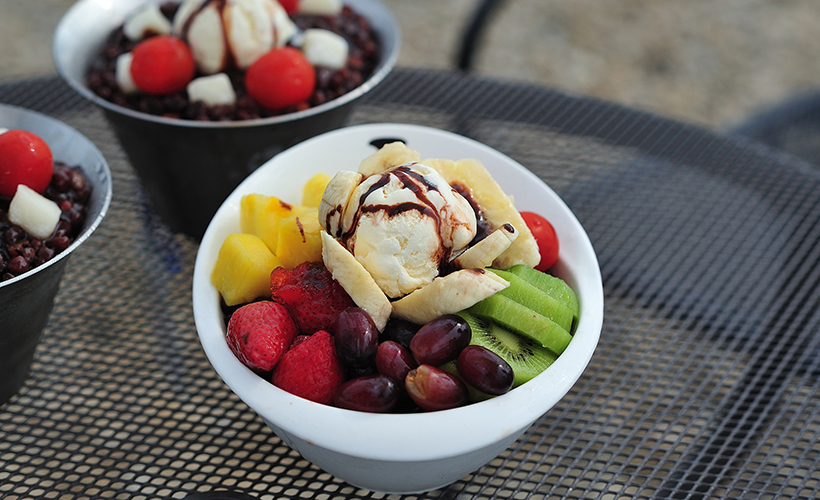
4. Indonesia: Of kolak and es buah
What’s on the iftar dinner menu in Indonesia, you might ask? Well, the infamous kolak will be, that’s for sure. Kolak is a sweet dessert comprising of ingredients swimming in creamy coconut milk cooked with palm sugar and pandan leaves. These ingredients usually include bananas, sweet potatoes, or jackfruit wedges. Kolak biji salak is one variation that’s popular as well, featuring lime-sized balls of chewy sweet potato dough.
Es buah is another example of a sweet Indonesian delicacy commonly enjoyed during Ramadan. Diced fruits (both fresh and canned), jellies of all flavours, the occasional basil seeds, and coconut milk come together to form an almost nectar-like fruity cocktail. Coupled with the strong Indonesian heat that boils down year-round, this refreshing mixture certainly makes for an appetising iftar starter.
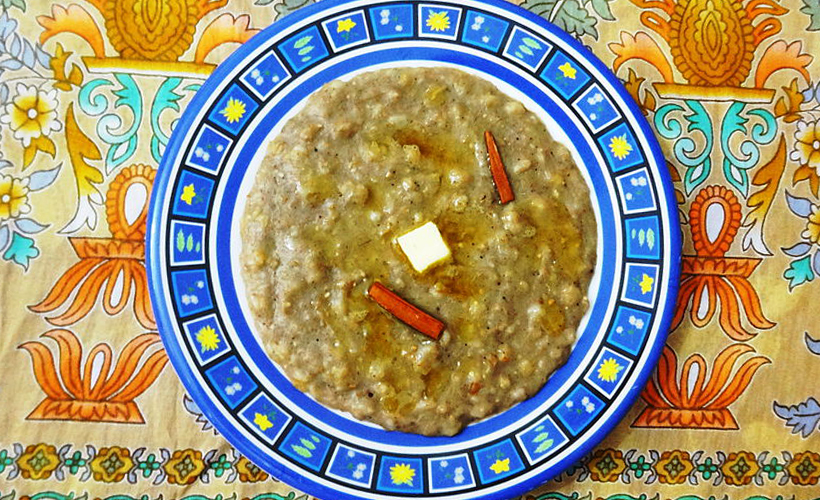
5. United Arab Emirates (UAE): Of harees and thareed
Harees is a porridge-like dish commonly associated with Ramadan in the UAE. After fasting from dawn to dusk, what else could make for a wiser iftar meal than something easily digestible yet filling?
Good thing harees ticks all those boxes. It’s made from pearled wheat that’s stewed till broken down and forms a texture akin to oatmeal. The next step in the cooking process sees the addition of either tender lamb, beef, or chicken, as well as a flurry of spices to amp up the fragrance. Oh, and ghee too!
Not just to Muslims in the UAE but to Muslims in the region, thareed is a slow-cooked stew featuring scrumptious chunks of lamb and vegetables served atop a thin, crisp flatbread called reqaq. In fact, it’s mentioned in the Hadith as the Prophet Muhammad’s favourite dish!
All this talk of iftar food might have you salivating at your desk, or wherever you’re reading this now. However, we wish to take a second of your time to highlight a pressing issue that Ramadan always brings about – food wastage. So here’s a friendly reminder not to over-buy. If you do, practice the essence of Ramadan by sharing with others or giving it out to those in need instead.
View this post on Instagram
6. Sri Lanka: Of kanji and falooda sherbet
Kanji is the Sri Lankan version of congee, but what sets it apart from other Asian congees is that it has a coconut milk base. Loved for being comfort food and the main star at any Sri Lankan iftar meal, the congee is slow-cooked with beef or chicken stock, pandan (screwpine) leaves, garlic, and coconut milk, and the meat is added upon serving.
All things must end on a sweet note, and falooda sherbet is a popular iftar dessert amongst Sri Lankans. The pretty-in-pink dessert is made from rose sherbet syrup, milk, basil seeds, vermicelli noodles, and jelly. Not only a refreshing thirst-quencher, this sweet treat also manages to squeeze in some fibre goodness from the basil seeds – a great gut-friendly alternative for those of you with a sweet tooth.
View this post on Instagram
7. Africa: Of jollof rice and chorba frik
Jollof is a spiced rice dish, simmered in reduced tomatoes, onions, peppers, and different seasonings depending on where it’s made. The dish is well known for its dark orange hue and can be found in Ghana, Nigeria, Senegal, Cameroon, and Liberia, with each country having their own variations. As a staple dish to be served at gatherings, jollof also inched its way onto iftar dining tables. The dish can be enjoyed by itself or served with a side of fried plantains or any meat of choice.
Chorba frik is a comforting soup served mostly in the Maghreb region (Algeria, Tunisia, and Libya) of North Africa. Although each country has its own version of chorba frik, the only difference is the meat used in the dish. While it’s traditionally made with mutton, it can also be substituted with beef, poultry, or vegetables. The dish packs some heat and is best enjoyed with a serving of plain boreks (a flaky pastry made with yukfka or phyllo).
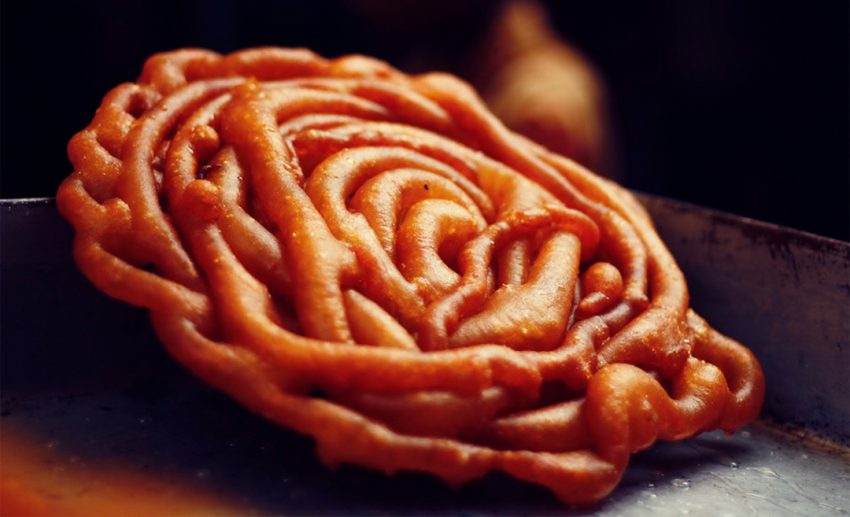
8. Bangladesh: Of seekh kebab and shahi jilapi
Located on the Bay of Bengal is Bangladesh, home to approximately 146 million Bengali Muslims. Come Ramadan, you can venture to Chawkbazar in Dhaka, which is the biggest iftar market in Bangladesh. Amongst the hustle and bustle, you’ll find seekh kebab as one of the many iftar dishes peddled by the traders. Not to be confused with its cousin the shish kebab (meat chunks on a skewer), seekh kebabs are marinated minced meat (either beef or lamb) that are grilled to perfection on a skewer over a coal grill.
For a sweet treat after, Bengalis indulge in a little shahi jilapi – a traditional sweet that that’s also commonly found in Chawkbazar. These sweets are huge in size, with some even weighing up to 2.5kg each. Commonly bought to be shared amongst family, the shahi jilapi is made by deep-frying dough and soaking them in a syrup mixture made up of rose water, cinnamon, cardamom, sugar, and water for a few hours.
This article was first published on 27 May 2019.

